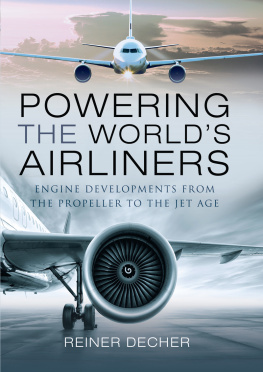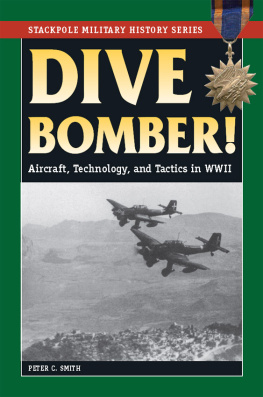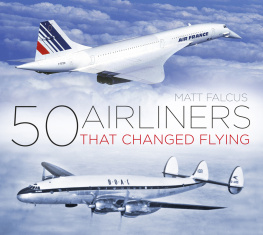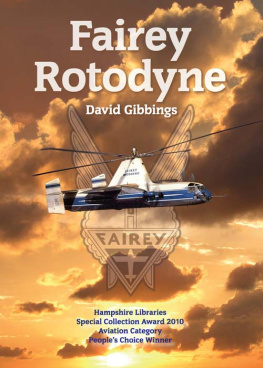WINGS ACROSS CANADA
WINGS ACROSS CANADA
An Illustrated History of Canadian Aviation
Peter Pigott

Copyright Peter Pigott, 2002
All rights reserved. No part of this publication may be reproduced, stored in a retrieval system, or transmitted in any form or by any means, electronic, mechanical, photocopying, recording, or otherwise (except for brief passages for purposes of review) without the prior permission of Dundurn Press. Permission to photocopy should be requested from the Canadian Copyright Licensing Agency.
Publisher: Anthony Hawke
Copy-Editor: Andrea Pruss
Design: Jennifer Scott
Printer: Friesens
National Library of Canada Cataloguing in Publication Data
National Library of Canada Cataloguing in Publication
Pigott, Peter
Wings across Canada : an illustrated history of Canadian aviation / Peter Pigott.
Includes bibliographical references and index
ISBN 1-55002-412-4
1. AirplanesCanadaHistory. 2. AeronauticsCanadaHistory. I. Title.
TL523.P53 2002 629.133340971 C2002-902287-8
1 2 3 4 5 06 05 04 03 02

We acknowledge the support of the Canada Council for the Arts and the Ontario Arts Council for our publishing program. We also acknowledge the financial support of the Government of Canada through the Book Publishing Industry Development Program and The Association for the Export of Canadian Books, and the Government of Ontario through the Ontario Book Publishers Tax Credit program.
Care has been taken to trace the ownership of copyright material used in this book. The author and the publisher welcome any information enabling them to rectify any references or credit in subsequent editions.
J. Kirk Howard, President
Printed and bound in Canada.
Printed on recycled paper.
www.dundurn.com
Dundurn Press
8 Market Street
Suite 200
Toronto, Ontario, Canada
M5E 1M6
Dundurn Press
73 Lime Walk
Headington, Oxford,
England
OX3 7AD
Dundurn Press
2250 Military Road
Tonawanda NY
U.S.A. 14150
This book is dedicated to Barbara and Guy,
the last of the New Delhi Pigotts
ACKNOWLEDGEMENTS
Everyone knows that Icarus came to a bad end attempting to fly, but how many people sympathize with his poor biographer trying to get eyewitness accounts and photos of the event? This is my ninth book on aviation, and I have learnt that much of what an aviation author does is not commune with the Muse but harass innocent people. In this case, I relied on the generosity of Captain Leah Gillespie, 4 Wing Public Affairs, Cold Lake Alberta; Major Lynne Chaloux, Senior Public Affairs Officer, 1 Canadian Air Division Headquarters, Winnipeg; and Janet Lacroix, CF Photo Unit, Ottawa, among others. On the civilian side, Ken Leigh came through once more, as did the National Archives in Ottawa and Peter Gauthier at Dollco Digital, who printed some of the photos. To all who helped, my gratitude.
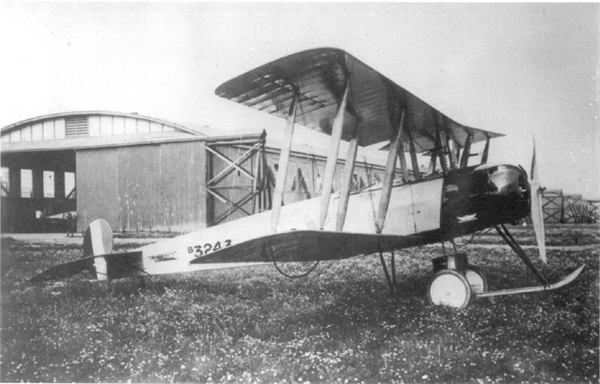
Courtesy of the Department of National Defence
Avro 504K
AVRO 504K
The central landing skid, the wing tip hoops, and the hundreds of bracing wires made for an unattractive aircraft. The rotary engines gyroscopic force would kill many student pilots. But the Avro 504, especially the K version, was built in great numbers, enough to continue on for a decade after the Treaty of Versailles was signed, to be used as the basic trainer of the RAF, and to become the preferred aircraft of barnstormers in the 1920s.
The Royal Flying Corps initially ordered the 504 as a training and reconnaissance aircraft, but in 1914, they pressed it into service as a bomber in the famous air raid on the airship sheds at Friedrichshafen. The idea of the 504 was to prepare the novice pilot to fly the more pernicious fighter aircraft of that day, like the Sopwith Camel and the Pup both entirely unforgiving machines. The Avro 504s greatest advocate was Colonel Robert Smith-Barry, who had long complained that the high casualty rate among inexperienced pilots at the front was the result of the poor training they had received at home. As the new commanding officer at the School for Special Flying in Gosport, Hampshire in 1917, Smith-Barry ordered several Avro 504s, one of which was flown by the first Canadian air ace, Duncan Bell-Irving. In a letter to the family in Vancouver, Bell-Irving would write of the Avro: Im here instructing on what is quite the most perfect two seater aeroplane made. AVRO with its 100 hp Le Rhone rotary engine. Theyre quite out of date as regards to war but quite the most perfect thing to fly and teach people on.
There really wasnt much in the way of controls for the trainee pilot; the four basic instruments were the airspeed indicator, the altimeter, the inclinometer, and the engine speed indicator. On his left, the magneto switch and the fuel tank selection control stood out, as did the control column in the centre and the comparatively large compass that was positioned beneath the dashboard. Takeoff and landing were the most difficult to master, so the instructors kept these for the trainee to learn at the very last. He had no real control over it it was either on or off. To land the aircraft, the petrol supply was turned off and then turned on again when the wheels were firmly on the ground, the fuel lever adjusted until the engine fired in short bursts for taxiing. If the mixture was too rich when the pilot was in the air, the engine lost power, and all the pilot could do was close the fuel lever off and look for a suitable field to land in. With its lightweight design, the Avro was sensitive to even a slight breeze, and the pilot had to land directly into the wind probably the last thing on the poor pilots mind at the time. The 504s tandem cockpit, with the instructor in the rear, where he could watch the poor student, was equipped with the latest means of communication, the Gosport tube, invented by Smith-Barry, which could be plugged into the pupils helmet. Before its use, instructors communicated by passing notes, by yelling, or, as one hapless pilot recalled, by removing the control column and hitting him on the head with it.
Understandably, given the 504s propensity for spins, the instructors were afraid to give pupils charge of the aircraft. For the scourge of the 504s pilot was its engine, or various engines: the 110 hp Le Rhone, the 130 hp Clerget, and, most usually, the 110 hp Gnome Monosoupape rotary engine. Avro had designed the basic airframe to accept each. The rotary engines gyroscopic force, combined with its weight in the nose, affected the 504s handling. It caused the nose to rise on left turns and drop with right, which required compensation by the rudder. Such was the gyroscopic effect that left or right turns needed full left rudder, and the poor pilot was always battling the force from the engines torque, which took the aircraft sharply to the right. Little was known about spins then, and many a novice pilot was killed by his inability to recover from an unintentional one. But at a time when many aircraft had rotary engines, this was a common ailment, and the Avro 504 handled better than most notably the famous Sopwith Camel, which shared the same 110 hp Gnome and 110 hp Le Rhone.
Next page

